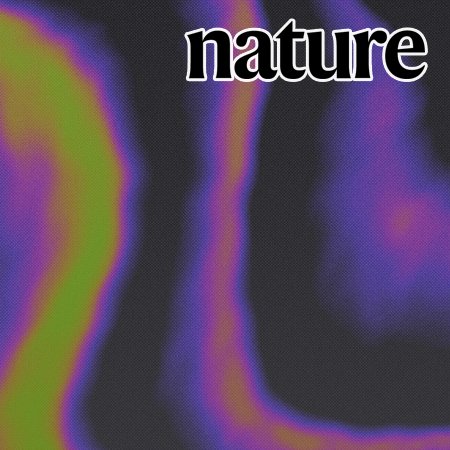Research Research Highlights
Research Highlights
Research Highlights
Research Highlights
Research Highlights 미리보기

Atomic lift-off of epitaxial membranes for cooling-free infrared detection
Prof. Celesta S. Chang
Professor Celesta S. Chang's research team from the Department of Physics and Astronomy has developed an 'Atomic Lift-Off' technique that enables the production of ultrathin, freestanding perovskite oxide membranes—paving the way for high-performance, cooling-free infrared sensors.
Research Highlights Board

New Technology to Manufacture Polymer Composites with Well Dispersed Graphene Particles
Professor YOUN Jae Ryoun Professor YOUN Jae Ryoun (Department of Materials Science) and his research team have developed an innovative method to fabricate polymer composites with well dispersed graphene particles in the matrix resin by using solvent free powder mixing and in-situ polymerization of a low viscosity oligo...

World’s Smallest Bubbles Observed
Professor HONG Byung Hee Professor CHO Sung-Pyo Bubbles are called bubbles because they vanishes so quickly before our eyes. However, bubbles survive quite a long time in nanoscale and affect our lives. Divers’ disease (decompression sickness), for example, is known to be caused by these nano-size bubbles remaining in ...

New Bell-measurement Scheme to Teleport Photons with High Success Probability
Professor KIM Jin-Soo Professor Hyunseok JEONG’s research team (Department of Physics and Astronomy) has developed a new Bell-measurement scheme to teleport photons with high success probability. Photons are a promising candidate for quantum information. But the standard Bell measurement using linear optics and photo d...

Why Targeted Cancer Therapy Seldom Works in Treating Ovarian Cancer
Professor SONG YongSang Professors SONG YongSang (School of Medicine) and Duhee BANG (Yonsei University) have discovered why targeted cancer therapy shows high rates of failure in treating ovarian cancer. The research team collected 11 spatially separated tumor samples from a stage three ovarian cancer patient and perf...

Professor ZHANG Byoung-Tak Develops Imaginative Computer Program
Professor ZHANG Byoung-Tak leads the research on brain-inspired computational intelligence technologies. Professor ZHANG Byoung-Tak’s research team (Department of Computer Science and Engineering) has developed an imaginative computer program that can acquire information contained in videos and make up words or dialogu...

Professor KWON Sunghoon Develops DNA Laser Printer
Professor KWON Sunghoon’s team has developed a DNA laser printer Professor Sunghoon Kwon’s research team (Department of Electrical and Computer Engineering) has developed a DNA laser printer. A DNA laser printer is a desk-sized platform that enables speedy DNA sequence synthesis. Before now, DNA sequencing was time-con...

Professor KIM Jin-Soo’s RNA-Guided Genome Editing Using Digenome-seq
Professor KIM Jin-Soo Professor Kim Jin-Soo’s research team (Department of Chemistry) has announced Digenome-seq -- in vitro Cas9-digested whole-genome sequencing -- to profile genome-wide Cas9 off-target effects in human cells. Using Digenome-seq, the team successfully proved that CRISPR-Cas9, an RNA-guided genome edi...

Sensors Inspired by Spider Legs
Professor CHOI Mansoo developed a highly acute sensor inspired by spider legs Professor CHOI Mansoo (Department of Mechanical Engineering) has developed a highly acute sensor which was inspired by the lyriform organ located in spider legs. The lyriform organ has slits of differing lengths which helps spiders detect pre...

Professor CHANG Kyung-Sup’s Theory on South Korea’s Compressed Modernity
Professor Chang's theory of ‘compressed modernity’ has been a key component in Korean studies worldwide Since the mid-90s, Professor Chang Kyung-Sup (Department of Sociology) has defined South Korea’s post-war development as ‘compressed modernity’. Since then, his theory of ‘compressed modernity’ has been a key compone...

Professor KIM Dae-Hyeoung Invented Artificial "Smart Skin" for Skin Prosthesis
This “smart skin” is the first synthetic skin that is actually capable of reproducing the sense of touching real human skin. “Smart” innovations have flourished in the past few years, transforming a range of common objects. For example, the phone has become a smartphone; the card has become a smartcard. Even innovation...

Professor LEE Changhee Enhances Efficiency of Quantum Dot Light-emitting Devices
Professor LEE Changhee Professor Lee Changhee’s research team (Department of Electrical and Computer Engineering), in cooperation with KAIST and KIST, has discovered the core reason for the efficiency of quantum dot light-emitting devices. Energy is delivered between quantum dots when light-emitting devices emit light,...

Professor PARK Kyu Hyung Finds Macular Degeneration More Common Among People Who Weigh Less
Professor Park Kyu Hyung (School of Medicine) presented a new medical finding that people who weigh less are more likely to face macular degeneration, an optical disease not uncommon among the elderly which can lead to loss of sight. This contravenes previous medical theory that obese people are more likely to face mac...

